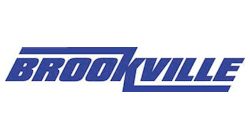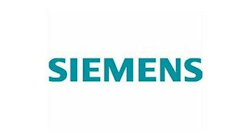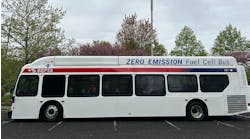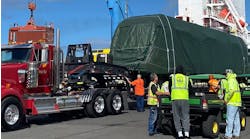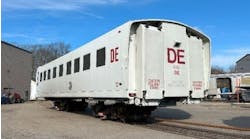While the public sector is facing its own set of operating challenges, the private sector is not immune. And like the public sector, the private sector is adapting and pushing forward.
For instance, light-rail vehicle (LRV) suppliers Siemens Mobility (Siemens) and BROOKVILLE Equipment Corporation (BROOKVILLE) are gearing up for multiple deliveries this year, with BROOKVILLE having delivered the first of five Liberty® NXT LRVs to Sound Transit in March and Siemens producing LRVs to deliver to agencies in Phoenix, Portland and Houston, among others.
Mass Transit magazine recently caught up with BROOKVILLE Sales Manager Jake Ferko and Siemens Mobility North America Rolling Stock President Michael Cahill to get the latest updates on these vehicles, as well as challenges the private sector is experiencing.
What features have been added to the companies’ LRV/streetcar rolling stock in the past year, and what new features are coming in 2022 and beyond?
JF: “We're in our second generation of the Liberty NXT streetcar platform. [For the second-generation platform], typically, it’s evolved system components that we’re using. The overall dimensions of it are slightly different. It still uses the same onboard energy storage system, but since it's been out there operating for so long, it has improved. The onboard energy storage system, we've put it to the test with how efficient it can be off wire. Now that we've seen it succeed and prove itself out in the field, we can tell our customers if [they] want a certain length that we used to not accept or approve, we let them do that now.”
MC: “In Charlotte, N.C., they are operating the first hybrid-battery powered streetcar from Siemens Mobility. The streetcar can operate both on and off-wire via an Onboard Energy Storage System (OESS), allowing the vehicle to maintain a catenary-free zone where necessary. Our LRVs in Phoenix and soon in Orange County feature a new front-end bumper designed to minimize collision impact and vehicle damage while increasing operator and passenger safety. In the future, we can upgrade a vehicles’ OESS as battery technology evolves, as each OESS was intentionally created to include an expandable and modular design that allows for easy upgrade. Other features we could see in the future include greater use of digital technologies that allow real-time viewing of onboard vehicle cameras and operator screens from wayside control centers.”
What are some of the top amenities and features customers are requesting to be included in the LRVs, and how has the pandemic affected these requests?
JF: “Every time we get different requests and requirements from transit agencies. There have been some requests for antimicrobial materials to be used in the car; a better HVAC system to keep better airflow; and [to] space out the seats differently or the way the standing area is, so the boarding and off-boarding all could be modified to better accommodate the COVID guidelines. And [someone] wanted the door for the operator.”
MC: “The pandemic has changed the way people see public transportation, and because of that we are seeing customer requests for touchless ride capabilities, upgraded air ventilation and filtration systems, and passenger information systems to monitor for overcrowding and mask use. We currently offer optimized door spacing for greater passenger flow at stations. Our C-car configuration on all our S700 LRVs allows for better social distancing; Passenger Information Systems can communicate about social distancing and real-time occupancy levels; and our vehicle HVAC systems now include fresh air dampers that automatically adjust based on the number of people in the vehicle.”
How are the companies responding to the push for green mobility?
JF: “There're opportunities out there for completely all battery-electric locomotives, switcher locomotives, freight locomotives. The demand is coming. The thing that agencies need to understand is that it comes with the price tag; it's expensive. There're some opportunities we're looking at right now with the potential to provide all electric locomotives. We already have our streetcars, which are all battery electric, and then there's the potential for hydrogen-powered propulsion in the future. But that's still in its research and development phase.”
MC: “All our vehicles, from LRVs to locomotives, are painted with water-based, low VOC paints. And our vehicles feature LED lighting throughout, requiring less power and lasting longer than traditional lighting. All our Charger locomotives are EPA and CARB certified, and our new dual-powered Chargers for Amtrak can run on diesel, biodiesel or electric power. We are always looking for sustainable alternatives in our manufacturing process. Solar panels provide more than 80 percent of the energy needed at our Sacramento plant, and we are making it a goal to be carbon neutral before 2030 and 100 percent powered by green energy.”
What supply chain impacts are the companies experiencing?
JF: “You can't predict lead times for when you're going to get certain components in. So, it's hard to give customers a defined delivery schedule and even price fluctuations with steel. One week we send a quote out, we feel confident in our pricing, and then it fluctuates non-stop. And I think everyone's seeing this. It's hard with the supply chain, not having clearly defined delivery times and prices and constant fluctuations. These are long-drawn-out contracts. So, it's a living thing you've got to be constantly updating. We do our best to optimize cost and it's just learning to adapt with what's going on.”
MC: “There was excessive pressure on the world’s supply chain from all sides. Several key markets were suddenly shut down, cutting off the flow of many key products. In some instances, many customers delayed scheduling on certain orders, causing a sudden waterfall of excess products. The pandemic revealed weaknesses in the global supply chain, and to be resilient here in the U.S. market, we are constantly looking to develop and grow our network of American suppliers.”
What is the next big thing for LRVs?
JF: “The potential for maybe totally off-wire routes. There are solutions out there that can make it possible. I think streetcars are strong right now and they will continue to be strong. And the way streetcars can positively impact a community's economy and the flow of moving people to different sectors of the city that maybe don't get the traffic it deserves. I think [streetcars] are finally getting some of the exposure they deserve, and the success stories help.”
MC: “Our colleagues in Germany are working on sustainable innovations for the global market, like a fully automated LRV, vehicle side automation to support driver assist and an automated depot to direct trains once at the yard. The global team is also testing hydrogen-powered commuter trains, which is a really exciting innovation we can’t wait to see come to the U.S.”


